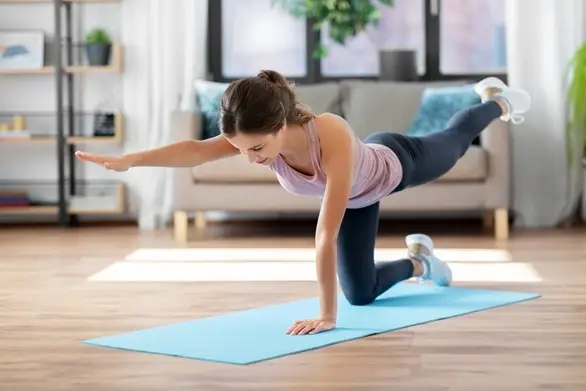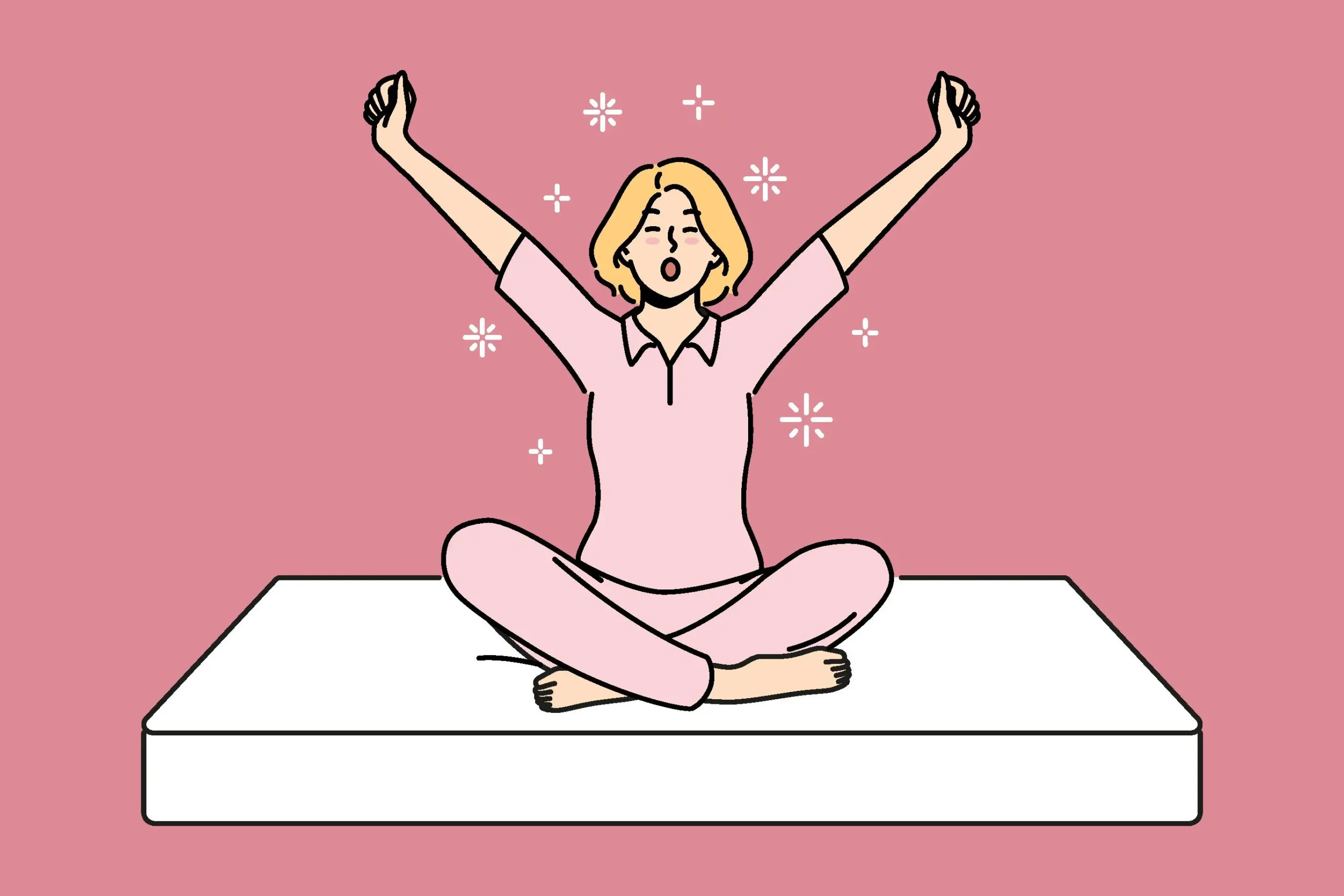These 5 exercises for lower back pain for the elderly are vital for relieving pain and incredibly easy to perform. As we age, our bodies become more susceptible to aches and pains, especially in the lower back. Chronic lower back pain and sciatica can significantly impact elderly individuals’ day-to-day activities and overall quality of life. If you or a loved one is struggling with lower back pain, you’ll be relieved to know that there are gentle yet effective exercises that can provide relief.
Before beginning any exercise or stretching program, the first thing to do is to be evaluated by an Integrative Chiropractor. An Integrative Chiropractor in Denver is trained to look for structural imbalances, degenerative conditions, and other causes of musculoskeletal (muscles, joints, and nerves) pain. The following practical, easy-to-perform exercises can be done in your home with minimal equipment required. These exercises strengthen back muscles and improve flexibility.
Don’t let lower back pain hinder your enjoyment of life. By incorporating these exercises into your routine, you can find relief and improve your overall well-being. These exercises have been proven effective, and we’re confident they can help you alleviate lower back pain and become more active. So, let’s dive in and discover the gentle exercises that can bring hope and optimism to your journey of relieving lower back pain today.
Table of Contents
ToggleThe Importance of Gentle Exercises for Lower Back Pain for the Elderly
Gentle exercises can be incredibly beneficial for relieving lower back pain in older patients. These exercises focus on improving flexibility, strengthening the core muscles, and promoting proper posture, all of which can help reduce pain and discomfort in the lower back.
Gentle exercises are not just beneficial; they’re essential for elderly individuals. They offer a safe and effective way to manage neck pain, middle back pain, and lower back pain without the risk of further injury or strain. Unlike high-impact exercises or those that require significant strength, these exercises are designed with your safety in mind. So, don’t let lower back pain hold you back. Start incorporating these gentle exercises for lower back pain for the elderly into your routine and take control of your well-being.
Regular exercises for lower back pain for the elderly have been shown to have numerous benefits for individuals with lower back pain. It helps increase blood flow to the affected area, releases endorphins (natural painkillers), and strengthens the muscles that support the spine. Additionally, exercise can improve flexibility and range of motion, reducing the likelihood of future injuries and improving overall quality of life.
It’s important to note that gentle exercises should be performed under the guidance of a healthcare professional or a qualified fitness instructor. Check out the videos below or contact our office to speak to a Chiropractor in Denver to learn to do these correctly. We’re happy to help!
Precautions When Performing Exercises for Lower Back Pain for the Elderly
Before beginning any exercise program, elderly individuals with lower back pain should consider a few precautions and seek professional advice if necessary. While gentle exercises are generally safe, it’s essential to ensure that they are performed correctly and at an appropriate intensity.
First, it’s essential to listen to your body and not push through any pain. Mild discomfort during exercises for lower back pain for the elderly is normal, but sharp or intense pain could indicate a problem. If you experience severe pain or your symptoms worsen during or after performing exercises for lower back pain for the elderly, it’s best to stop and consult a healthcare professional.
Second, it’s essential to start slowly and gradually increasing exercise duration and intensity. This allows the body to adapt and reduces the risk of overexertion or injury. Maintaining proper form throughout each exercise is crucial to avoid straining the lower back or other muscles.
Lastly, individuals with pre-existing medical conditions or those who have undergone recent surgery should consult their healthcare provider before starting any exercise program. They can provide personalized recommendations and modifications to ensure safety and effectiveness. This is especially important if you have concerns about your ability to perform these exercises or are unsure about the correct form. Your healthcare provider can help you determine the best exercises for your specific needs and ensure that you perform them correctly.
By considering these precautions, elderly individuals can safely and effectively incorporate gentle exercises into their routine to alleviate lower back pain and improve overall well-being. However, it’s important to note that this advice is general in nature and may not be suitable for everyone. If you have questions, schedule an appointment with a qualified Chiropractor in Denver!
Exercise 1: Seated Spinal Twist
The seated spinal twist is a gentle exercise that helps stretch and mobilize the muscles and joints in the lower back. It can help alleviate stiffness and improve flexibility, which in turn can reduce lower back pain. This exercise is particularly suitable for elderly individuals as it can be performed in a seated position, making it accessible for those with limited mobility.
To perform the seated spinal twist:
- Sit on a chair or a sturdy surface with your feet flat on the floor, hip-width apart.
- Place your right hand outside your left knee and gently twist your upper body to the left.
- Use your right hand to assist the twist, but avoid pulling or forcing the movement.
- Hold the twist for 15-30 seconds, breathing deeply and feeling the stretch in your lower back. Slowly return to the starting position and repeat on the other side.
It’s essential to perform this exercise controlled, avoiding any jerky movements or excessive twisting. Start with a gentle twist and gradually increase the range of motion as your flexibility improves. Depending on individual comfort and ability, this exercise can be repeated 3-5 times on each side.
Exercise 2: Cat-Camel Stretch
The cat-camel stretch is a simple yet effective exercise that helps improve the flexibility and mobility of the spine. It targets the muscles in the lower back to relieve pain and stiffness. This exercise can be performed on the floor or a mat, making it accessible for elderly individuals.
To perform the cat-camel stretch:
- Start on your hands and knees, with your hands directly under your shoulders and your knees hip-width apart.
- Begin by arching your back up towards the ceiling, tucking your chin into your chest.
- Hold this position for a few seconds, feeling the stretch in your lower back.
- Slowly lower your back down, allowing your belly to drop towards the floor and lifting your head to look forward.
- Hold this position for a few seconds, feeling the stretch in the opposite direction.
- Repeat the cat-camel stretch for 8-10 repetitions, focusing on smooth and controlled movements.
It’s important to move slowly and gently throughout this exercise, avoiding any sudden or jerky motions. Focus on breathing deeply and relaxing the muscles as you perform the movements. If you experience discomfort or pain, reduce the range of motion or consult a healthcare professional for guidance.
Exercise 3: Pelvic Tilt
The pelvic tilt is a gentle exercise that targets the lower back and abdomen muscles. It helps strengthen the core muscles and promote proper spinal alignment, which can reduce lower back pain. This exercise can be performed on the floor or on a mat, and it’s accessible for individuals of all fitness levels.
To Perform the Pelvic Tilt:
- Lie on your back with your knees bent and your feet flat on the floor, hip-width apart.
- Place your hands by your sides, palms facing down.
- Take a deep breath in, and gently tilt your pelvis backward as you exhale, pressing your lower back into the floor.
- Hold this position for a few seconds, feeling the engagement in your abdominal muscles.
- Inhale and release the tilt, allowing your lower back to return to its neutral position.
- Repeat the pelvic tilt for 8-10 repetitions, focusing on controlled movements and maintaining a neutral spine.
- Avoid excessive arching or rounding of the lower back during this exercise. Focus on engaging the abdominal muscles and using them to initiate the movement. If you find it challenging to maintain proper form, you can place a rolled-up towel or a small cushion under your lower back for support.
Exercise 4: Glute Bridge
The glute bridge is a great exercise for strengthening the lower back, abdomen, and buttocks muscles. It helps improve stability and promote proper spine alignment, reducing the risk of lower back pain. Perform these simple exercises on the floor or a mat.
To Perform the Glute Bridge:
- Lie on your back with your knees bent and your feet flat on the floor, hip-width apart.
- Place your arms by your sides, palms facing down.
- Take a deep breath in, and as you exhale, lift your hips off the floor, squeezing your glutes.
- Hold this position for a few seconds, keeping your core engaged and maintaining a straight line from your knees to your shoulders.
- Inhale and slowly lower your hips back down to the starting position.
- Repeat the glute bridge for 8-10 repetitions, focusing on controlled movements and maintaining proper form.
- During this exercise, avoid excessive arching or overarching of the lower back. Focus on using your glutes and hamstrings to lift your hips rather than relying on your lower back. If you find it challenging to maintain proper form, you can start by performing a partial glute bridge, lifting your hips only a few inches off the floor.
Exercise 5: Knee-to-Chest Stretch
The knee-to-chest stretch is a gentle exercise that helps stretch and release tension in the lower back and buttocks muscles. It can alleviate tightness and improve flexibility, reducing lower back pain. This exercise can be performed on the floor or a mat and is accessible to individuals with limited mobility.
To Perform the Knee-to-Chest Stretch:
- Lie on your back with your knees bent and your feet flat on the floor, hip-width apart.
- Place your hands on your thighs, just above your knees.
- Take a deep breath in, and as you exhale, gently pull your right knee towards your chest, using your hands to assist the movement.
- Hold this position for 15-30 seconds, feeling the stretch in your lower back and buttocks.
- Slowly return your right leg to the starting position, and repeat the stretch with your left leg.
- Alternate between the right and left legs for 3-5 repetitions on each side.
It’s important to perform this exercise controlled, avoiding any jerky movements or excessive pulling. Start with a gentle pull and gradually increase the intensity of the stretch as your flexibility improves. If you experience discomfort or pain, reduce the range of motion to whatever is comfortable.
If it’s difficult for you to go on the floor for this exercise, you can do it in bed or sitting in a chair.
Exercises for Lower Back Pain for the Elderly May Not Be Enough
In addition to the exercises for lower back pain for the elderly mentioned above, here are some other tips and lifestyle modifications that can help manage and prevent lower back pain in elderly individuals:
Maintain good posture: Practice proper posture throughout the day, whether sitting, standing, or walking. Avoid slouching or hunching over, as this can strain the muscles in the lower back.
Use proper body mechanics: When lifting heavy objects or performing tasks requiring bending, use your legs, not your back. Bend your knees and keep your back straight to avoid unnecessary strain on the lower back.
Stay active: Engage in regular physical activity to strengthen the muscles that support the spine. Low-impact exercises like walking, swimming, or tai chi can be especially helpful for elderly individuals.
Apply heat or cold therapy: Use heat packs or cold compresses to alleviate pain and reduce inflammation in the lower back. Apply heat before exercising to warm up the muscles and cold after exercise to reduce any potential swelling.
Maintain a healthy weight: Excess weight can strain the lower back, leading to pain and discomfort. Maintain a healthy body weight by following a balanced diet and exercising regularly.
Practice stress management: Chronic stress can contribute to muscle tension and exacerbate lower back pain. Incorporate stress management techniques such as deep breathing, meditation, or gentle stretching into your daily routine.
Remember, it’s essential to consult a healthcare professional or a qualified fitness instructor before starting any exercises for lower back pain for the elderly or making significant changes to your lifestyle. They can provide personalized recommendations and guidance based on your specific needs and limitations.
Be Consistent When Performing Exercises for Lower Back Pain for the Elderly
Dealing with lower back pain can be challenging, especially for elderly individuals. However, with the right exercises and lifestyle modifications, finding relief and improving overall well-being is possible. These five gentle exercises are designed for elderly individuals to alleviate lower back pain and promote flexibility and strength.
By incorporating exercises like the seated spinal twist, cat-camel stretch, pelvic tilt, glute bridge, and knee-to-chest stretch into your routine, you can target the muscles in the lower back, improve flexibility, and promote proper spine alignment. Additionally, following the additional tips for managing and preventing lower back pain can help reduce the frequency and severity of episodes as well as improving mobility.
Remember to start slowly, listen to your body, and consult a healthcare professional or a qualified fitness instructor if necessary. With patience and consistency, you can find relief from lower back pain and enjoy a better quality of life in your golden years. Don’t let lower back pain hinder your enjoyment of life—take the first step towards relief today. If you continue to struggle with pain, it may be time to contact Integrative Health and Rehabilitation to speak to a Chiropractor in Denver.
Performing Exercises for Lower Back Pain for the Elderly May Not Be Enough to Relieve Your Back Pain
Need more help managing your back pain? Contact us! We will give you honest answers to what is causing your pain and what we can do to help you. If we don’t think Acupuncture, Chiropractic, Dry Needling, or Shockwave Therapy will help your specific problem, we’ll tell you! Still not sure if we can help? Read some of our 5-Star reviews and see why we are the chiropractor Denver seeks for fast, effective, and lasting pain relief. We’ve been helping patients in Arvada, Denver, and Wheat Ridge, Colorado, for over 20 years. Learn more about the conditions we treat on our Health Articles page. Ready to start feeling better? Book an appointment online at our affordable Chiropractic clinic in Denver, CO!
*Thank you to physitrack.com for allowing the use of their videos!

Ready for an expert opinion? Get in touch today!
With a legacy of more than 25 years, our team specializes in helping individuals triumph over back pain, neck discomfort, and persistent headaches, all without relying on addictive medications or risky surgical procedures.






